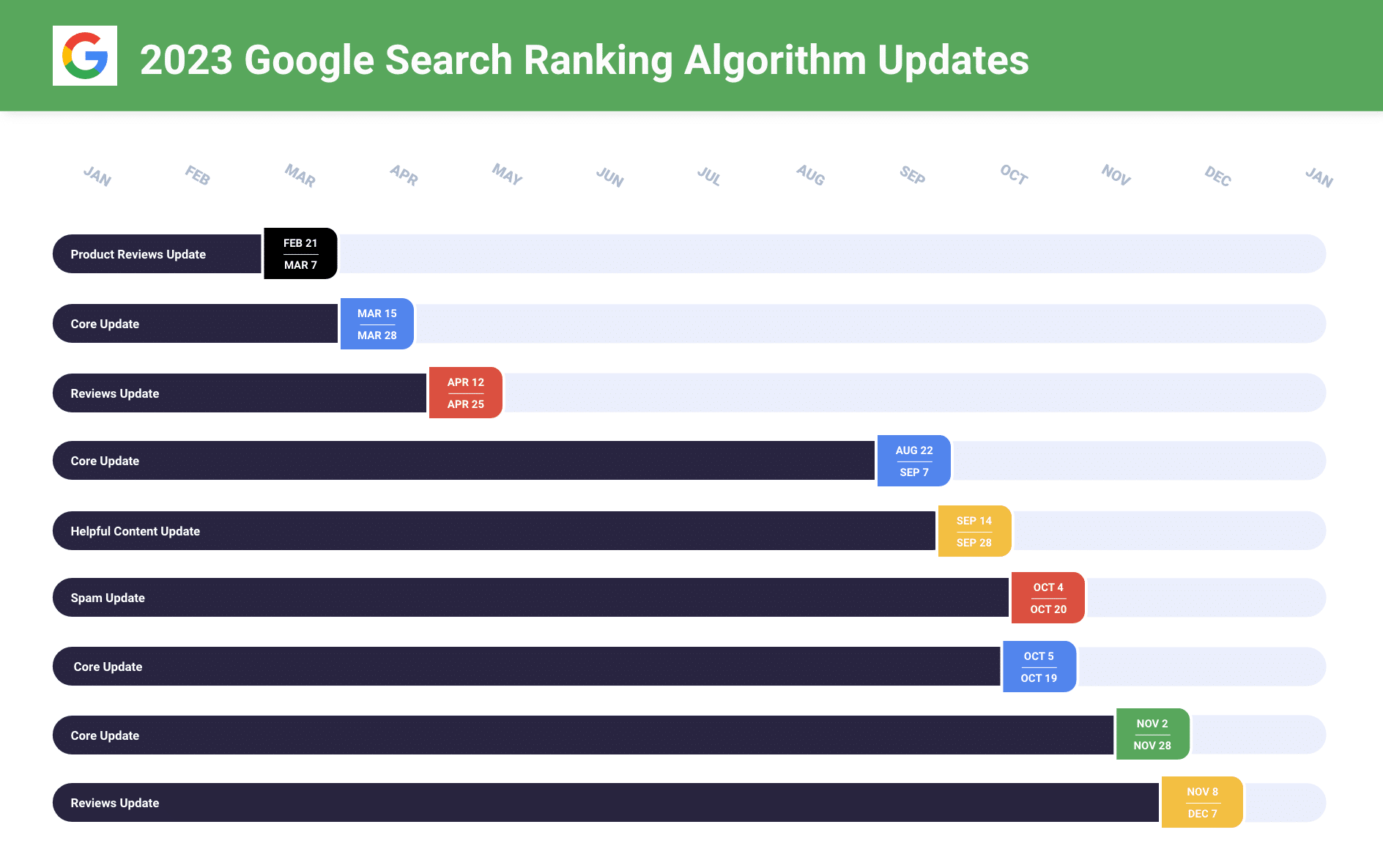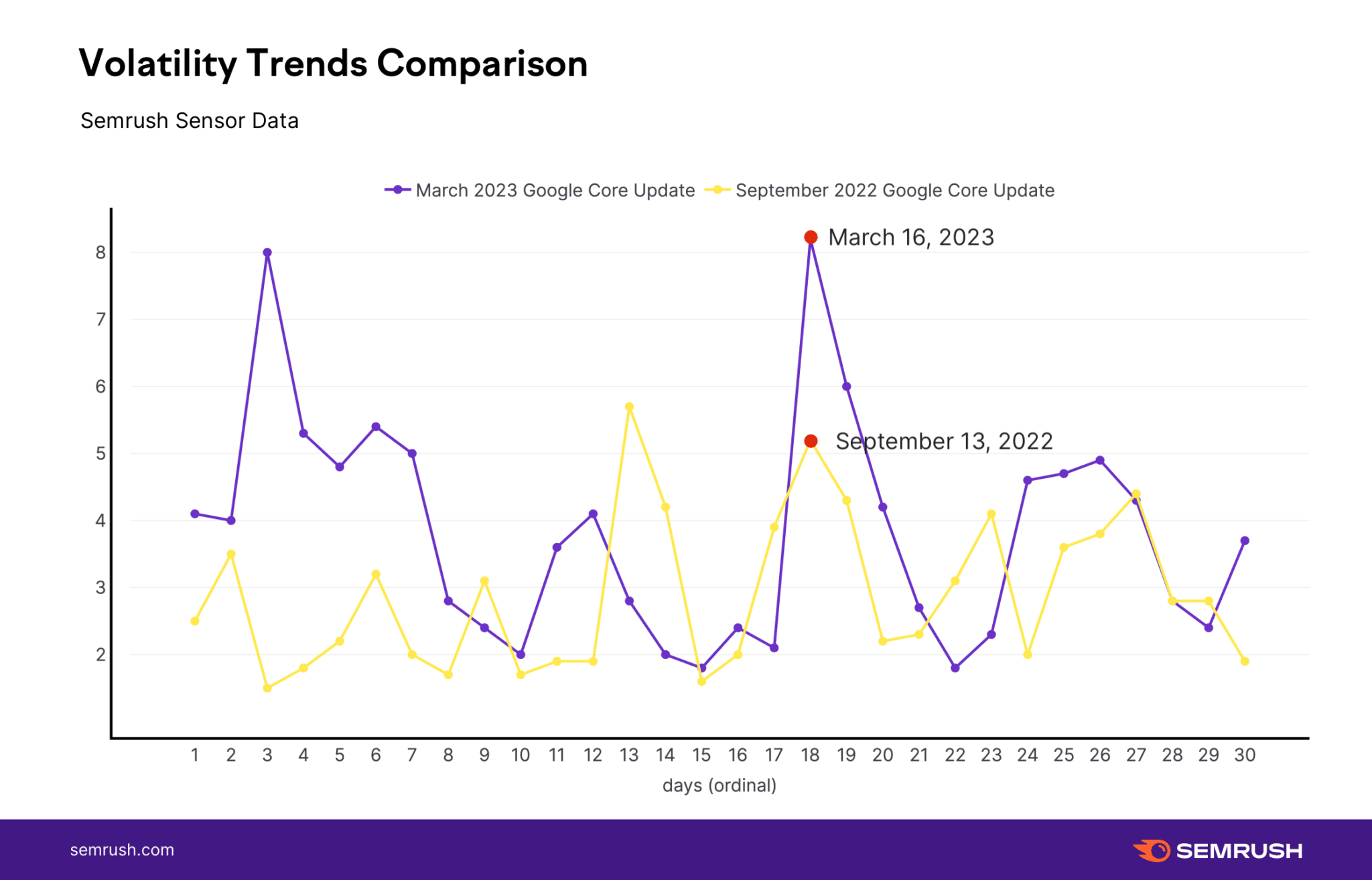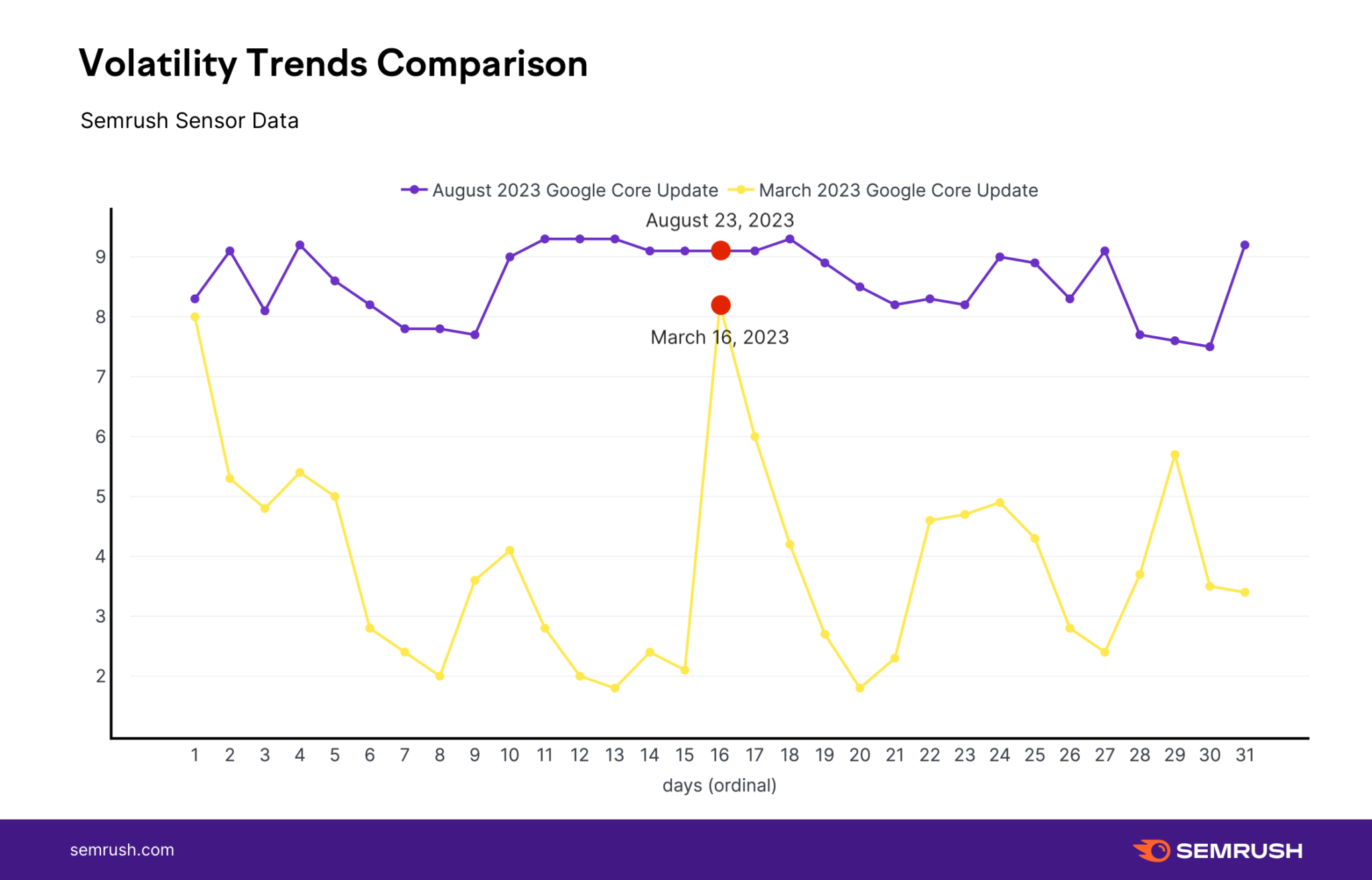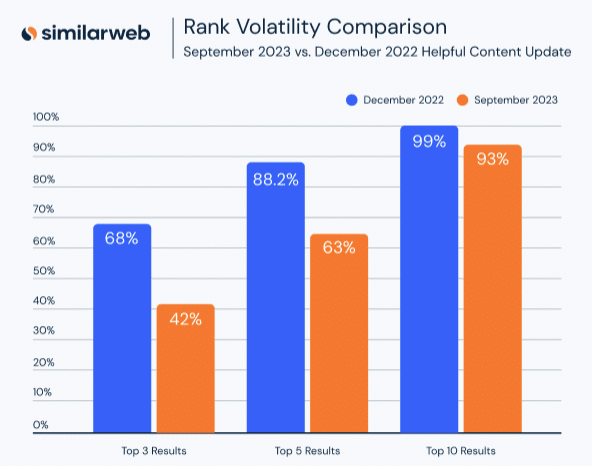The PPC community had a rollercoaster year in 2023. Google stirred things up by shaking cushions and discreetly adjusting ad prices, and the entire industry faced a major shift with the sunset of Universal Analytics, forcing everyone to transition to Google Analytics 4. It’s fair to say that GA4 did not receive the warmest welcome.
As we approach the end of 2023, let’s reflect on some of the most headline-worthy, controversial, and impactful changes that significantly influenced the PPC world over the past 12 months.
Google antitrust trial
Google spent 10 weeks on trial for allegedly using underhand tactics to ensure it stays the world’s leading search engine. In September, the search engine was taken to court by the U.S. Justice Department (DOJ) and 35 states in a landmark case that could bring significant changes to Google and the future of the Internet. The DOJ is hoping that the case will force Google to divest parts of its online advertising business, which could have a major impact on advertisers.
One of the most significant revelations from the 10-week trial occurred when Jerry Dischler, the head of Google Ads, testified that the search engine secretly raises ad prices to achieve targets by as much as 10%, using techniques such as RGSP (Google’s Randomized Generalized Second-Price ad auctions).
This revelation not only angered advertisers but also directly contradicted Dischler’s statement during a keynote speech at SMX Advanced in 2015. In a clip brought to light by Search Engine Land, Dischler explicitly informs marketers:
Advertisers have since accused Google of downplaying its manipulation of ad prices, with some alleging that the company quietly increases ad prices by as much as 100%, a significant difference from the 10% figure mentioned by Dischler.
Other notable takeaway to come from the federal antitrust trial include:
Reacting to the revelations to come from the antitrust trial, some advertisers were so outraged that they claimed they no longer trust Google Ads and were considering leaving.
Judge Amit P. Mehta, who was presiding the federal antitrust trial, is expected to make a decision in the New Year.
Google Ads boss resigns
Google Ads chief Jerry Dischler resigned two weeks after the federal antitrust trial ended. Google told us the decision had nothing to do with his testimony, during which he claimed the search engine quietly raises ad prices for marketers by as much as 10%. Apparently, he just wanted “a new challenge” after working in advertising for 15 years.
Google would not confirm whether Dischler is moving to another department or leaving the company. However, it was confirmed that Vidhya Srinivasan, who previously led product and engineering for ads, will take over leadership of the Ads team reporting to Google Senior Vice President Prabhakar Raghavan. Shashi Thakur, a 17-year Google veteran, will take on Srinivasan’s previous role and report directly to her.
Google’s additional legal issues
Google was also sued by Gannett, the publisher of USA Today, for using “deceptive commercial practices” and breaching U.S. antitrust and consumer protection laws in June. A few weeks later, eight individuals accused Google of illegally using copyrighted content and stealing the personal information of millions of Americans to train its AI products in a proposed class action lawsuit in San Francisco.
Meanwhile, across the pond, Google is facing the possibility that it may be forced to sell part of its ad business after being charged with violating the European Union’s antitrust laws. Following a lengthy investigation, the European Commission suggested that “mandatory divestment” is the only way the search engine can resolve the issue.
In the UK, publishers sued Google for $4.2 billion in lost ad revenue. The claimants alleged that Google gave preferential treatment to its own ad tech products, which resulted in reduced display ad revenues for publishers.
In another blow for Google, an Adalytics study accused it of mis-selling video ads to marketers for the last three years. Advertisers working for small businesses, Fortune 500 companies and even the U.S. Federal Government have all been impacted, with the Google violating its own standards approximately 80% of the time, according to the research. Google denied the claims, describing them as “extremely inaccurate”.
A second Adalytics study accused Google of risking the brand safety of advertisers by placing search ads on compromising non-Google websites, including sites containing pirated content and hardcore pornographic sites. Google categorically denied the allegations.
Goodbye, Universal Analytics!
Universal Analytics was officially replaced by Google Analytics 4 in July, but the sunset of UA was more gradual than expected. In fact, it took two months for the tool to finally stop processing data.
Still, marketers were not happy. Despite repeated warnings from Google that the enforced migration was coming, only one in four marketers had fully adopted it in time, according to a Search Engine Land survey.
Marketers struggled to navigate the new interface, so much so that many were contemplating switching to GA4 alternatives.
GA4 updates
Given the forced migration from UA, Google spent 2023 focusing on improving its product and rolled out numerous updates to GA4, including:
Search ads and Search Generative Experience
Google confirmed in May that it was experimenting with directly integrating Search and Shopping ads within SGE. The search engine explained that search ads would be available on day one of its release and that advertisers wouldn’t be able to opt out of showing ads on the new search experience – at least not immediately.
Google CEO Sundar Pichai told Steven Levy in a Q&A published on Wired in September:
- “[SGE] will have a space for ads in a way that makes sense for users and particularly on commercial queries.”
In November, Google began testing a new SGE ad format and then rolled out new AI features within SGE to boost product visibility and conversions.
Demand Gen goes global
Google Ads introduced Demand Gen on a global scale in October, extending access to all advertisers. This feature, considered the “next generation of Discovery campaigns,” brings new elements such as enhanced ad creation flow, additional inventory, and insights.
Unlike Discovery campaigns, which were limited to images, carousels, or product data feeds for creatives, Demand Gen allows the use of videos. This includes regular YouTube videos and Shorts, providing advertisers with greater flexibility in crafting content that resonates with their target audience.
Merchant Center Next
Google officially unveiled a new, simplified version of Merchant Center, called Merchant Center Next (MCN), at Google Marketing Live 2023. MCN will officially replace Google Merchant Center in early 2024.
YouTube’s ad blocker battle
In May, YouTube began issuing warning notifications to users, informing them that ad blockers are not allowed on the platform. The social media platform told users to either turn ad blockers off or pay for YouTube Premium if they want access to its extensive video library.
A month later, YouTube stepped up its tactics to stop its users from installing ad blocked by disabling videos.
By August, the platform was testing a new anti-adblocker popup that featured a timer warning when the next ad will play. A countdown clock, which reportedly ran for 30 to 60 seconds, would appear in the top right corner of the message, showing non-paying viewers how long they have left to take action before another ad starts.
The following month, YouTube started sending users with ad blockers enabled more aggressive prompts, warning them to either “Allow YouTube ads” or subscribe to YouTube Premium. The platform then admitted to delivering a “suboptimal” experience to users with ad blockers enabled.
However, in November, it was reported that YouTube’s ad blocker crackdown could be illegal in the EU. The platform had been using JavaScript code to detect ad-blocking extensions without asking users for consent first, claims privacy expert, Alexander Hanff – who has filed an official complaint with the Irish Data Protection Commission (DPC). The alleged act would mean YouTube is violating EU privacy laws – however, Google is denying the charge.
Amazon breaks records, Prime video ads, ‘quiet’ deals with Apple
Amazon Prime Day 2023 set new records, emerging as the retailer’s most successful to date. The two-day extravaganza, held on July 11 and 12, witnessed a notable year-on-year spending increase of 6.1%, reaching $12.7 billion in the U.S., as reported by Adobe Analytics data. These impressive outcomes followed Amazon’s strategic layoffs in April within its advertising division.
In an effort to increase ad revenue, Amazon announced that Sponsored Product ads will now be served on more platforms, including Pinterest and Buzzfeed. The retailer is also exploring the possibility of launching ads on Prime Video.
However, when it comes to advertising on Amazon, the platform reportedly gives tech giant Apple an unfair advantage. In a secret deal, Apple allegedly asked Amazon to not serve competitor ads on its product pages. In response, the retail giant reportedly agreed to only serve ads and recommendations at the bottom of Apple product pages – a gesture it doesn’t provide to rival brands like Samsung and Microsoft.
In other Amazon news, it was reported that the retailer’s share of seller revenue is now 50%. Recent changes, including higher fulfillment fees and mandatory advertising expenses, have resulted in increased costs for sellers.
YouTube and TikTok expand their ad offerings
Both YouTube and TikTok introduced new features in 2023, and research from independent organizations underscored the platforms’ substantial value in effectively targeting specific demographics.
YouTube
- YouTube Shorts ads started being rolled out to more advertisers as the solution moved from beta to general availability in November. For the first time, Marketers reported the ability to choose Short ads as a video format, integrate them with in-stream ads and combine them with in-feed ads.
- YouTube also started rolling out a personalized ‘For You’ section on the home tab of creators’ channels in November.
- A survey found that Gen Z aren’t just tuning into YouTube for the videos – they’re also watching the ads. Six in 10 teens would watch a YouTube ad rather than skip it, while almost half can recall an ad they’ve seen on the platform.
- Creators earn the most from their brand partnerships on YouTube – more than Instagram and TikTok, according to a survey.
TikTok
- TikTok sellers were invited to be the first to sign up and try out TikTok Shop before its public release in April. TikTok Shop is now available in Malaysia, the Philippines, Singapore, Thailand, the United Kingdom, the United States, and Vietnam.
- TikTok launched ads within its search results in August challenging Google and Microsoft. TikTok’s search ads are not a standalone ads product. Rather, ads are an extension of a TikTok video ad buy.
- TikTok was reported to pilot an ad-free subscription service on its app in October. Code within the social platform suggests that subscribers may soon be able to access content with no interruptions from ads.
- In October, the platform began testing increasing its video upload limit to 15 minutes. Previously, creators could only share videos that were a maximum of 10 minutes.
The decline of X
Following Elon Musk’s takeover in 2022, Twitter’s ad revenue steeply declined. In June, it was reported that advertising revenue had fallen by 59% year-on-year, prompting Musk to bring in Linda Yaccarino as the new CEO. The following month, the platform changed its name to X and tried to lure back advertisers by slashing the price of video ads.
In August, major brands began pausing their ad spend on X after learning campaigns appeared under pro-Nazi content. A Search Engine Land survey then found that less than a quarter of advertisers were planning to advertise on X over the next 12 months.
X decided d to start outsourcing the sale of some of its ad space by joining forces with the Google Display Network in October. However, after Musk endorsed an antisemitic conspiracy theory in November, it was reported that major brands weren’t just pausing their ad spend, they were cutting ties with the platform. Experts have predicted that X will lose as much as $75 million in ad revenue by the end of the year.
Meta experienced a significant year with the introduction of Threads, launched in July, with 100 million people subscribing in the first 102 hours.
While much attention was given to the company’s latest platform, notable developments also took place across Instagram, Facebook, and WhatsApp.
Microsoft ads boss steps down, predictive targeting and Target CPA and Maximize Conversions
After the departure of ads boss Rob Wilk in March, former VP, Global Partner & Retail Media Sales Kya Sainsbury-Carter took over. She keynoted Search Engine Land’s SMX Advanced in June. In a Q&A with Search Engine Land contributor Greg Finn, she discussed the future of Microsoft Advertising and emphasized the role of conversational AI.
Here’s a breakdown of other significant advertising developments from Microsoft in 2023:
The rapid pace of AI development led to a sense of overwhelm among 70% of marketers this year. Complicating the situation, both Google and Microsoft have been inserting ads into AI experiments without providing brands the option to opt-out. This has raised concerns among advertisers who worry about their products and services being promoted alongside inappropriate content.
Here’s an overview of some of the most significant AI advancements, news and developments in 2023:
Amazon
- Amazon rolled out enhanced AI capabilities to help advertisers create better product listings in September. The new technology simplifies how sellers create product descriptions, titles, and listing details by automatically generating content based on brief product descriptions.
- Amazon unveiled plans in October to roll out upgraded generative AI capabilities that offer a more conversational, detailed, and personalized user experience in the US from January.
- Select Amazon advertisers were able to start creating AI-generated images to use in ad campaigns in October. The tool offers advertisers the ability to add backgrounds or scenery to plain product images.
Google
- Google announced that PMax was rolling out generative AI to create text assets, images in May, to make setup much easier than in the past process.
- Google upgraded the capabilities of its Store Sales reporting and bidding to help marketers working on Performance Max campaigns to boost offline sales.
- The Google Ads help guide launched a new AI assistant in August. Still in open beta, the new feature has been designed to help users find answers and solve account issues relating to Google Ads – however, the search engine warned answers could be inaccurate.
- Google now requires political ads to disclose when AI-generated images, videos and audio have been used.
- Google was facing potential legal action from the owner of the Daily Mail in July over claims that the search engine allegedly has illegally taken hundreds of thousands of the newspaper’s articles to train its ChatGPT rival, Bard.
- Google rolled out significant updates to its Performance Max Best Practice Guide in August. The refreshed document now includes information on new strategies, advising retail marketers on how they can better optimize campaigns and improve conversions.
- Google responded to safety concerns regarding its Performance Max product in August. The search engine came under fire after its platform YouTube was accused of improperly tracking children for targeted advertising purposes in a study conducted by Adalytics. However, Google has denied the claims, suggesting there has been a misunderstanding.
- Google Bard was able to start answering questions about the content of YouTube videos in November. Following a significant update to the chatbot, Bard can now summarize video footage when users enter a YouTube URL.
- Google expanded its AR Beauty ads in October to let brands showcase lip and eye products, with plans to soon add foundation.
- Google released a range of new generative AI product imagery tools for advertisers in the U.S in November. Merchants can leverage these capabilities to create product imagery simply by using text prompts, completely free of charge in Product Studio.
- YouTube introduced Spotlight Moments in October – a new advertising package that will serve your brand’s videos next to “the most relevant and engaging content associated with the moment.”
Microsoft
- Microsoft’s Performance Max launched in open beta in July, with select marketers able to access its full inventory and serve ads across its network.
- The new Bing failed to take any market share from Google after six months. Although Microsoft disputes the data, research from web analytics service StatCounter showed Bing’s market share was actually lower in 2023 than it was in 2022 – before new Bing launched.
- Microsoft introduced AI-generated headlines and descriptions for ad campaigns in August. This service was launched alongside the company’s new auto-generated assets feature and IF functions for responsive search ads (RSAs).
- LinkedIn started rolling out a new tool that leverages AI to simplify ad creation in October. The new feature, called Accelerate, has been designed to help advertisers execute optimized campaigns in Campaign Manager in under five minutes.
- Microsoft was criticised after publishing an offensive AI-generated obituary for NBA star Brandon Hunter in September.
- The Guardian accused Microsoft of damaging its brand by adding an offensive AI-generated poll to
- Meta launched a range of AI-powered chatbots that could improve its targeted advertising capabilities. The chatbots reportedly have the ability to collect large amounts of data regarding users’ interests.
- Meta Ads Manager rolled out its first generative AI-powered features for advertisers in October. The new tools were designed to maximize productivity, personalization and performance.
Several other platforms made waves in 2023:
Instacart
Lyft
- Lyft started serving ads to customers on its app for the first time in August. Adverts appear while consumers wait for their taxi, when they are matched with a driver, and for the duration of the journey.
Pinterest
- Pinterest and Amazon teamed up for multi-year ads partnership in April. When Pinterest users encounter an Amazon ad on Pinterest, they are directed to Amazon’s website to complete their purchase. Amazon is the first-ever third-party advertising partner on Pinterest.
- Pinterest started testing an AI “body type” filter to make search more inclusive in November. The new consumer tool, which was rolled out on women’s fashion and wedding ideas, enables users to filter their product search results based on different body types.
Reddit
Shopify
Snapchat
Yelp
Key statistics
Throughout the year, researchers conducted studies to delve into the state of digital marketing in 2023 and published their findings. These insights provide an indication of the industry’s probable performance in the foreseeable future:
SMX Advanced and SMX Next
We can’t wrap up our 2023 year in review without talking about SMX. We had two epic virtual conferences this year with expert speakers discussing topics such as how to revolutionize your PPC game with Chat GPT to how to make Performance Max for Lead generation work. From SMX Advanced:
Well that’s a wrap on 2023! What a year it’s been.
Looking forward to 2024, I think automation and generative AI will play a more prominent role, and we’ll see big changes to the ad landscape as Google continues to roll out SGE. Additionally, expect significant developments from TikTok, Reddit and other advertising platforms.
from Search Engine Land https://ift.tt/WNdma0j
via
IFTTT







